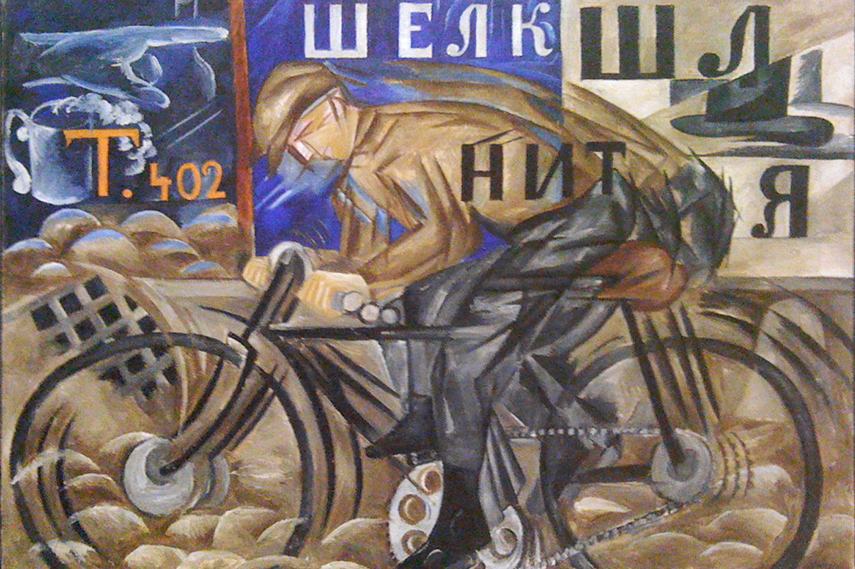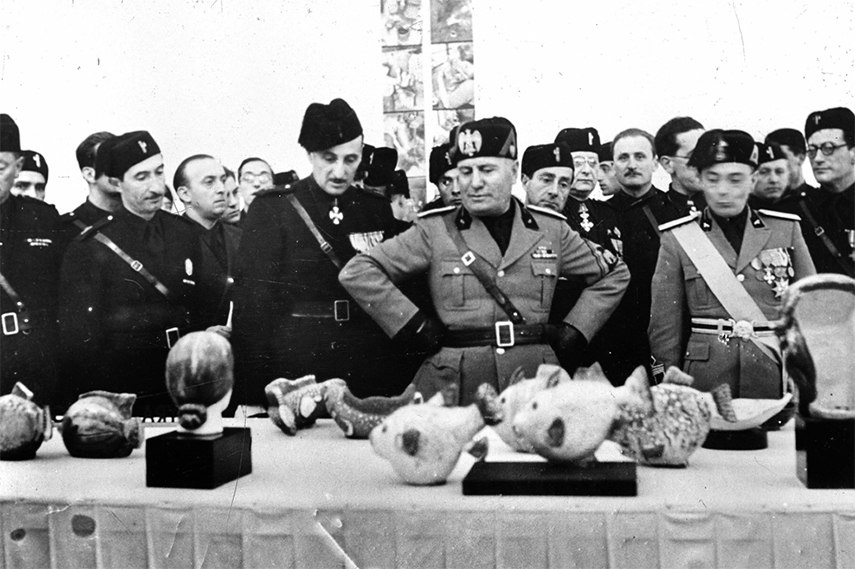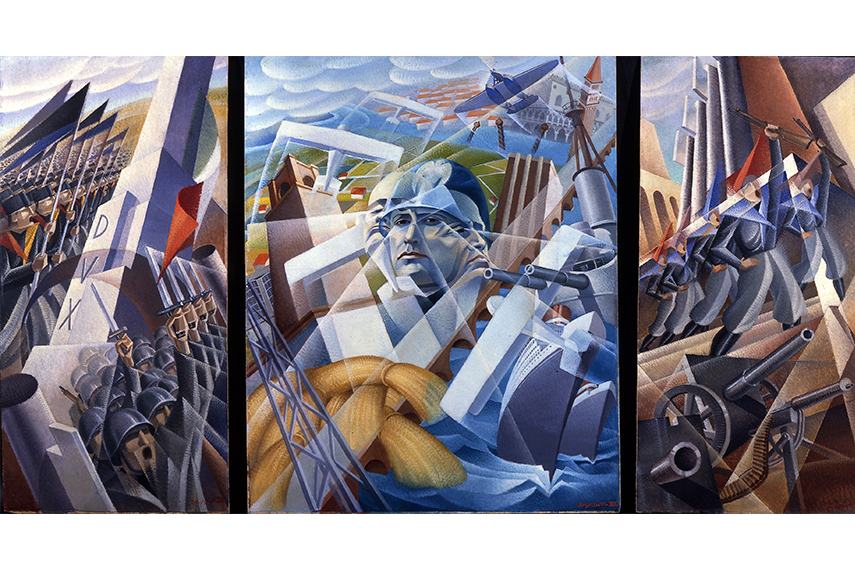A Brief Guide to Futurism Art Movement
As it often occurs in the ever-changing world of art, through rejection and destruction of older forms of culture, new concepts, perspectives, ideals and ideas are born. Futurism art movement was a 20th-century product of the need for breaking off with the traditional styles and the insatiable desire for modernity. Futurism was a celebration of technology, power and modern life and an attempt to demonstrate the beauty of the machine, speed, violence and change. Aside from the artistic perspectives, Futurism also carried a strain of politics embedded within the movement, in fact, it was one of the most politicized art forms of the twentieth century. Even though the Futurism art movement did create some architecture, most of its artists worked in traditional media such as painting, sculpture, graphic design, interior design, film, theater, music, ceramics or industrial design, and their eclectic style was much inspired by Post-Impressionism. One of the most famous Futurism artists, Carlo Carrà, stated:
We insist that our concept of perspective is the total antitheses of all static perspective. It is dynamic and chaotic in application, producing in the mind of the observer a veritable mass of plastic emotions.
Another unique aspect of this radical movement is that it wasn’t immediately identified with a distinctive style, its adherents worked in an eclectic manner, displaying influences from various aspects of Post-Impressionism, Symbolism and Divisionism. It was Marinetti’s manifesto from 1909 which announced Futurism and its goal of discarding the art of the past and celebrating change, originality, and innovation in society. Alas, the over-empowered enthusiasm for modernity and the machine ultimately led to the celebration of the arrival of the First World War and welcomed Fascism.
Art and Politics Usually Aren't a Good Mix
The entire Futurism art movement began attaining a different context as its founder, Marinetti, collaborated with Mussolini. A direct relationship between politics and art, such as this one, could never last long. Even though some ideologies may share similarities, in their basic principles they are two completely different spheres of life that should remain apart. The example of Futurism is a lesson on how art and politics can become inextricably linked, and how this arose from a social and class basis. So, let’s examine how Futurism started, developed and dissipated, and what were the key ideas which lit the flames that burned a bit too bright and too close to the violence of war.

Manifesto of the Futurist Art Movement and the Origins
The front page of the French newspaper Le Figaro published the “Futurist manifesto” in 1909 by Filippo Tommaso Marinetti. With its launch, Futurism came to life. Marinetti was previously a member of Abbaye de Creteil, the community that was founded by several artists in order to publish works, but it was closed down by its members early in 1908. Marinetti’s manifesto set a rather fiery tone where he openly attacked cultural tradition and lashed out against the preconceived notions of art. He even called for the destruction of museums, libraries and feminism. Sick of Italy’s reliance on its classical heritage, the Futurism artists proclaimed their burning desire for the abandonment of the past and embracing of the future. Countless manifestos, leaflets, art and poetry periodicals were published in the period between 1909 – 1944. The provocative agenda of Futurism was spread throughout the cities globally in the attempt to awaken the new aesthetics of modern life. It is through this entrepreneurial method that the Futurists influenced people with the mass promotion of their ideas. In addition to the manifestos, the Futurism art followers often self-published books and ran art and literary journals, magazines and newspapers. Their goal was to conquer the international stage and approach people through poetry, politics, language, entertainment and art. The movement initially centered in Milan, but it spread quickly to Turin and Naples. Soon, what started as a calling for the Italians to break through the paralyzing obsession with the glories of the past, quickly progressed into an international endeavor.

Style and Development of Futurism Art
This founding manifesto didn't contain a positive artistic programme, which was later attempted to be made in the subsequent Technical Manifesto of Futurist Painting. They committed themselves to 'universal dynamism', which meant that objects in reality were not separate from one another or from their environment. Some of the Futurist artists were so fervent about the ideology that one of the painters actually named her daughter Propeller. Their obsession with the technology of the modern age was becoming evident everywhere. Italian Futurist artists Umberto Boccioni, Carlo Carrà, Luigi Russolo, Gino Severini, and Giacomo Balla were the painters who first signed their first manifesto in 1910. But, it was only until the next year that Marinetti and the Futurism artists would visit the Salon d’Automne in Paris and witness Cubism in person for the first time. This experience left an immediate impact which can be seen in Boccioni’s painting Materia from 1912 for instance, but the Futurists claimed their work to be new and completely original. 19th-century scientist and photographer, Étienne-Jules Marey, is considered as one of the precursors to the cinema. His innovative experiments with time-lapse photography studied the mechanics of animal and human movement. Fascinated by this idea of the “dynamic”, the members of Futurism art movement aimed to represent the rhythms and motion of an object in their images, poems and manifestos. They glorified the idea of combining the human with the machine, with many of their works depicting an amalgamation of the two concepts. Dynamism seemed to be a recurring concept at the early developments of Futurism, but later on, in 1913, the unified nature of it started to fall apart. Members of the movement began developing their own personal positions, and as the war came along, the center of happenings shifter from Milan to Rome, and even though the movement remained active in the 1920s, the initial energy had dissipated.

Futurism and Fascism
The ideal embodiment of Futurism was critically related to the larger social and political crisis in Italy. Both before and during the war, Futurism played a significant role in the dissemination and support of the central values and ideology from which proto-fascist sentiments were constructed. The brilliant agitational propaganda and the crowd-stirring spectacle of Futurism artists were almost a model for the Fascists. Mussolini adopted many ideas and influences of Marinetti’s innovations in his performances and public speeches. Nationalism, militarism, irrational violence and a general aestheticization of violence appeared in both Futurists’ and Fascists’ propaganda. The literary genre and narrative form of a manifesto has been used before by the artists, but the members of Futurism used it as a political weapon, thus establishing its precedence among the subsequent Avant-movements. The founder, F.T. Marinetti was a political figure from the start. Before the end of the war, Marinetti founded the Futurist Political Party, putting the entire movement at the forefront of the support for Mussolini and the idea of a unified Italy.

Aftermath of a Vision of the Future
The direct links between Futurism and Fascism remain a huge embarrassment for Italians. Viewed by some as the source of national pride, Futurism represented a brief moment when, once again, Italy was at the forefront of art and culture globally. Critics and historians often use this connection with Fascism to depreciate modernism in general. The obvious influence of Cubism is also another variation of the criticism, claiming that the entire movement was nothing more than a crude provincial version of other forms. Ultimately, Futurism was a major force in the art world and a bona fide social movement. Its followers called for the anarchy but found themselves often aligned with Mussolini's Fascists. As the movement’s founder, Marinetti, gathered zealous adherents, the whole ideology was very similar to the propaganda of the far right-winged parties, which would prove to be fatal for the arts movement in the future. Nevertheless, Futurism artworks were incredibly impactful up until Marinetti’s death in 1944, the later movements like Art Deco , Vorticism, Constructivism, Surrealism, Dadaism and much later Neo-Futurism were heavily inspired by the works of the Futurists. Their ideals and emphasis on youth, speed and technology remained as significant components of Western culture. Marinetti's thoughts are still existent in Japanese culture and their mangas and anime. A relatively new literary genre called cyberpunk, treating technology with a critical eye, is often connected with the ideas of Futurists. In 1988, there was a revival of sorts in theater in Chicago labeled Neo-Futurism, utilizing focus on speed and brevity in order to create new forms of theater. Still, as an organized artistic movement, Futurism is regarded extinct ever since the death of its leader Marinetti.
Editors’ Tip: Italian Futurism, 1909-1944: Reconstructing the Universe (Guggenheim Museum, New York: Exhibition Catalogues) by Walter Adamson, Emily Braun and Silvia Barisione
Explore further about the Futurism movement. This book was published to accompany the exhibition Italian Futurism, 1909-1944: Reconstructing the Universe at the Solomon R. Guggenheim Museum in 2014. Advancing the scholarship and understanding of this influential yet little-known twentieth-century artistic movement, the publication examines the historical sweep of Futurism from its inception with F.T. Marinetti's manifesto in 1909 through the movement's demise at the end of World War II. Presenting over 300 works created between 1909 and 1944, by numerous artists, writers, designers and composers, this book encompasses painting, sculpture, architecture, design, ceramics, fashion, film, photography, advertising, free-form poetry, publications, music, theater and performance and features various academic essays discussing Italian Futurism's diverse themes and incarnations.
All images used for illustrative purposes.
Featured images: Left: Mostra della Rivoluzione Fascista / Right: Umberto Boccioni - Unique Forms of Continuity in Space, 1913. Captions, via Creative Commons / Fortunato Depero, Skyscrapers and Tunnels (Grattacieli e tunnel), 1930 / Gino Severini - Dynamic Hieroglyphic of the Bal Tabarin, 1912 ; Giulio D'Anna - artwork ; Futurists Luigi Russolo, Carlo Carrà, Filippo Tommaso Marinetti, Umberto Boccioni and Gino Severini in front of Le Figaro, Paris, February 9, 1912. Captions, via Creative Commons
Can We Help?
Have a question or a technical issue? Want to learn more about our services to art dealers? Let us know and you'll hear from us within the next 24 hours.

